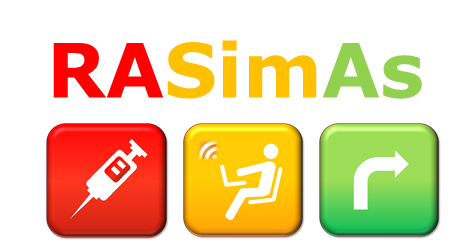Navicad
The NAVICAD planning module
The NAVICAD planning module, Fraxinus, offers specialized tools for the different phases of bronchoscopy planning:
-
import of CT images
-
target pinpointing
-
automatic anatomical segmentation of the airways
-
generation of a route to the pinpointed target and navigation with virtual bronchoscopy (VB)
-
advanced state-of-the-art visualization methods AccuSurf (to be published and announced)
The CustusX toolkit contains an automatic algorithm for extracting tubular structures such as blood vessels and airways from different image modalities (CT, MR and US) and organs (brain, lung and liver). The algorithm both extracts the surface of the tubular structures and its centerlines. Many parameters can be modified to yield good results for different image modalities and organs. For our bronchoscopy application, these parameters have been optimized to airway segmentation from typical thoracic CT images, and a pre-set of parameters was found. This has simplified the user interaction of the method. SINTEF has also worked on implementing some improvements to the algorithm itself.
DISCLAIMER: This is a research tool: It is not intended for normal clinical use, and is not FDA nor CE approved.
NAVICAD official project web site: http://navicad.ro
Background
In NAVICAD, SINTEF has focused on developing an open source image guided bronchoscopy navigation system based on iterative specifications from pulmonologists and in collaboration with the Romanian team. It is developed from a general open source image-guided intervention software toolkit, the CustusX platform (www.custusx.org) with a simplified graphical user interface (GUI) specialized for planning and guiding bronchoscopy procedures. SINTEF has developed a simplified version of the image guided bronchoscopy system, Fraxinus, the NAVICAD planning module, which does not contain tracking of tools. The underlying platform, CustusX, has support for real-time position tracking of tools using either electromagnetic or infrared positioning systems, this functionality will be enabled for the NAVICAD guidance system in conjunction with the new navigation catheter developed by the Romanian team and tested in collaboration in the last phase of the project. The preclinical testing of the NAVICAD catheter was successfully tested in Trondheim in February 2017.
For the guidance part of the NAVICAD platform, we have, in collaboration with the Romanian team refined and tested in the clinic an intraoperative registration method for automatically performing CT-to-patient based registration during the initial phase of the bronchoscopy, i.e. the sedation of the airways. We are using an electromagnetic tracking sensor mounted to the tip of a conventional bronchoscope and position data is acquired continuously during the sedation phase of a bronchoscopic procedure.
SINTEF has set up a laboratory test suite for the bronchoscopy navigation system using the Ultrasonic Bronchoscopy Simulator, LM099, KOKEN CO., LTD, Tokyo, Japan. We have acquired CT images of the phantom, to function as navigation maps similar to the real clinical setting. The phantom is connected to a robotic arm, UR5, Universal Robots, Odense, Denmark. The robot arm is inducing respiratory movements to the airways of the phantom to mimic the movements in a humane lung. This makes it possible to test and assess the navigation system regarding accuracy and robustness in a realistic setting.
Based on the diversity of objectives, with interfering clinical and experimental aims, there is a certain added value of working together in the partnership, with clear impact towards both the clinical sector (through the expected development of a novel investigation system for focal lung masses) and also towards the medical industry applications.
St. Olavs Hospital has contributed in all phases of the project together with both the technological team at SINTEF and in Romania. In the clinic, we have been able to test equipment in realistic setting, assess the accuracy and feasibility and also study the visualization solutions during real patient procedures when the NAVICAD planning and guidance system is used alongside the conventional systems used for bronchoscopy and sampling of peripheral lesions. The clinical goal is to increase the success rates of biopsies using better planning and guidance system developed by the Norway-Romania team collaboration.
Funded by
-
The National Authority for Scientific Research, Bucuresti, Romania
-
Ministerul Educației Nationale, Bucuresti, Romania
-
EEA Grants, and Norway Grants, are the financial contributions of Norway, Iceland and Liechtenstein towards the reduction of economic and social disparities in the European Economic Area (EEA) and to strengthen bilateral relations with 16 EU and EEA Member States in Northern, Central and Southern Europe.
Acknowledgments
The research leading to these results has received funding from EEA Financial Mechanism 2009 - 2014 under the project EEA-JRP-RO-NO-2013-1-0123 - Navigation System for Confocal Laser Endomicroscopy To Improve Optical Biopsy of Peripheral Lesions in the Lungs (NAVICAD), contract no. 3SEE/30.06.2014.










